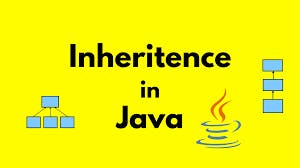
When designing object-oriented systems in Java, one of the most crucial decisions developers face is choosing between inheritance (Is-A) and composition (Has-A) relationships. Understanding the difference between these relationships can help you write code that is easier to maintain, extend, and debug.
The Is-A relationship represents inheritance in Java, When one class inherits from another, it is said to "be a" type of the parent class. This allows the child class to inherit fields and methods from the parent. This relationship is implemented using the extends keyword.
public class Shape {
void area() {
System.out.println("area is...");
}
}
public class Triangle extends Shape { // Triangle IS-A Shape
void perimeter() {
System.out.println("Perimeter is...");
}
}Here, the Triangle class "is a" type of Shape. The "Is-A" relationship ensures that Triangle can access the area method defined in Shape.
Pitfall to Avoid: Overusing inheritance can lead to a rigid codebase. Favor composition when the relationship doesn’t naturally fit into an "Is-A" hierarchy.

A Has-A relationship represents composition, where one class contains an instance of another class. This is implemented by creating object references.
public class Book {
private String title;
private int year;
private String isbn;
private double price;
public Book(String title, int year, String isbn, double price) {
this.title = title;
this.year = year;
this.isbn = isbn;
this.price = price;
}
public String getTitle() {
return title;
}
public int getYear() {
return year;
}
public String getIsbn() {
return isbn;
}
public double getPrice() {
return price;
}
@Override
public String toString() {
return "Book{" +
"title='" + title + '\'' +
", year=" + year +
", isbn='" + isbn + '\'' +
", price=" + price +
'}';
}
}
public class Author {
private String name;
private String email;
private List<Book> publishedBooks; //Author Has-A collection of published Books
}
// Good Use of Is-A
public class Employee {
protected String name;
protected double salary;
}
public class Manager extends Employee { // Correct: Manager IS-A Employee
private List<Employee> team;
}
// Good Use of Has-A
public class Department { // Department HAS-A Employee(s)
private List<Employee> employees;
}// BAD: Forcing Is-A relationship
public class ElectricCar extends Engine { // Incorrect design
// This creates tight coupling and doesn't make semantic sense
}
// GOOD: Using Has-A relationship
public class ElectricCar {
private ElectricEngine engine; // Correct: Car HAS-A Engine
}Choosing between Is-A and Has-A relationships is crucial for good object-oriented design. While inheritance (Is-A) provides a powerful way to share behavior, composition (Has-A) often offers more flexibility and maintainability. Remember the famous design principle: "Favor composition over inheritance."
When in doubt, ask yourself:
Your answers to these questions will guide you toward the right design choice.
At DevelopersMonk, we share tutorials, tips, and insights on modern programming frameworks like React, Next.js, Spring Boot, and more. Join us on our journey to simplify coding and empower developers worldwide!